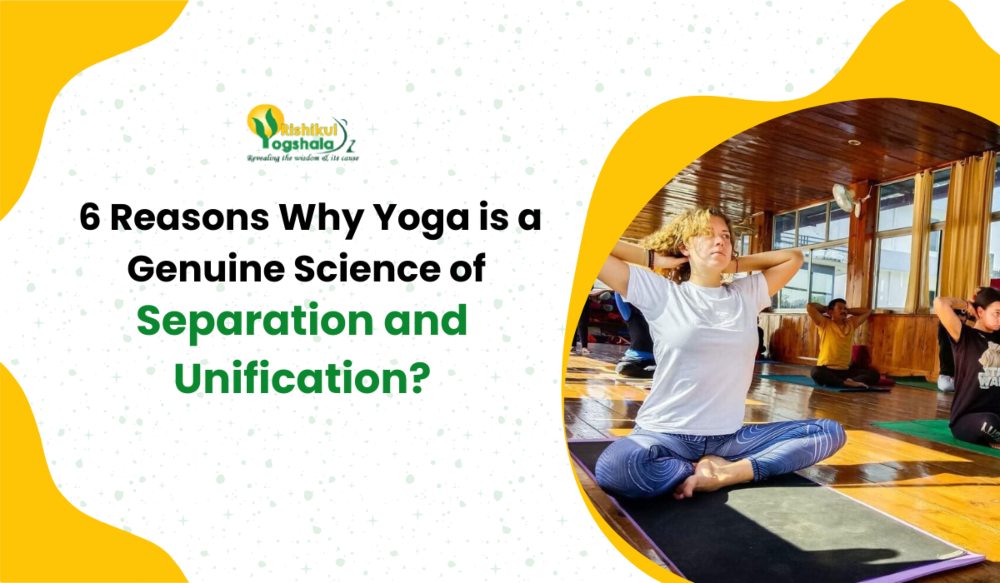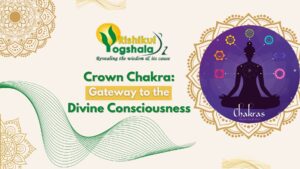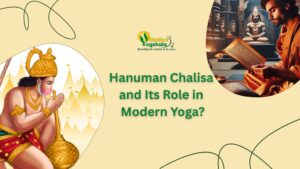Yoga: A Genuine Science of Separation and Unification
The applied methodology of separating the self from body and mind is known as “Yoga Vidhi”.
Most of us have studied, learnt, and taught by “yoga schools” that yoga is the science of unification between the individual self and the universal self.
Yes, both meanings are right. It depends on which tradition you belong to and what technical interpretation and application your tradition has been teaching you. I wanted to inform you clearly that you will get multiple technical understandings in the future when you study yoga philosophy and read yogic books on your own.
Let me bring to your attention “Sanatan Dharma” (eternal law and duties which sustain the universal phenomena); it is widely known as “Hinduism” these days. In India, we have numerous spiritual traditions and sects, which give the freedom to choose a personal spiritual master, celestial being, and God,” though all is one!
It is relying on what inspires you as the supreme truth. We will need to see the most well-known traditions, which have been inspiring and enlightening millions of people in the world. Three well-known spiritual traditions have been influencing the spiritual world by their devotional methods, yogic lifestyle, intellect, and scientific facts.
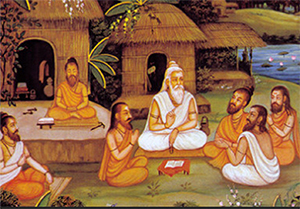
1. The Shivaism – Teachings of “Shiva” (Auspicious one and the first Yogi) is how to withdraw the pure consciousness from matter (including body and mind complex) by philosophical wisdom, contemplation, and meditation. The wisdom was imparted to the “Rishis” (Seers), and from them, it passed through to those who have been seeking wisdom and its cause. It is also known as “Lineage”; therefore, “Lord Shiva” is the supreme reality and “Ishta Devta” (worshipper’s dearest deity).
2. Vaishnavism – Studying and devoting oneself to the reincarnations of Lord Vishnu as a Supreme Being, for instance, studying the significant and principal life of “Shree Rama” from “Ramayana” (an Indian devotional epic) and the universal principles discussed between “Shree Krishna and Arjuna” in “Bhagavad Gita” (a highly recommended text on yoga). Thus, one who is inspired and follows the “Lord Vishnu” as a supreme being is known as a “Vaishnavite”.
“Bhagavad Gita” (highly recommended text on yoga)

3. Shaktism – Without “Shakti”, there might be no sense of thinking about creation, protection, and destruction. “Shakti” is investigated as universal feminine energy, the primordial power behind everything, living and non-living, both. Shakti has created numerous Avtaras (forms); these are known as “Parvati” (the consort of Lord Shiva and mother of Shree Ganesha and Kartike), “Kaali” (the goddess of devastation), and “Durga” (the brave goddess). In the “Puranas” (ancient literature of India), the Vedic and Puranic Rishis and Yogis honoured her as “Adi-para-shakti” (supreme being goddess).
“Shakti” has been worshipped as a divine mother by millions of people all around the world; yogis have been worshipping “Shakti” in the form of “Kundalini”; therefore, they can awaken the dormant potential energy within, from the lower chakra (Mooladhar) to the higher chakra (Sahasrara), where Shakti unites with Shiva/the superconscious state.
That’s interesting, having such numerous traditions, methodologies, rituals, and philosophies; whether it would have created doubt and error in the aspirant mind, yet it has been amazing to see all that. It still does not clash between any traditions and sects, and it respects each other’s choices.
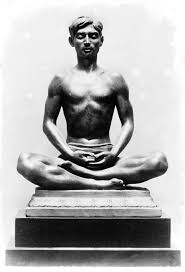
In India, the Indian schools of thought and philosophies have been placed on three platforms; these are widely known as Shoonyawad (Nihilism philosophy), which includes CHARVAK, BUDDHISM, and JAINISM; the second is Dvaitawad (Dualism philosophy), which includes SAMKHYA and YOGA; and last, Advaitwad (Non-dualism philosophy), which includes BRAHMA SUTRAS.
According to the Indian schools of thought, it should be studied consecutively, so that we can have a much clearer understanding of “matter and consciousness”. Although the “Yoga Vidhi” (the applied science of yoga) has been accepted by all the schools of thought.
Let’s have a look at what the etymological word yoga is; we need to know grammatical references from yoga texts and the most trustworthy commentary.
Yoga Darshan
1st The word “YOGA” is derived from its Sanskrit verb root “Yuj Samadhao”, which makes “Samadhi”, MAHARISHI VYASA. In his commentary on YOGA DARSHANA, it says, “YOGAH SAMADHI” (Yoga is the deep state of absorption in meditation). It’s the most influential and accepted meaning of the word yoga by scholars.

Yujir Yoga
2. The 2nd is “Yujir Yoga”; the word yoga means here “samyoga” (union), that state of a Yogi where the Yogi attains “Kaivalya”, the mind is free from duality, and it remains self alone. This is the ultimate goal of Raja Yoga (unification between the individual self and the cosmic self).

Yoga Is Taken as “VIYOGAH” (Separation),
3. The 3rd is one of the most influential references, coming from the “Bhagavad Gita”, 6th Chapter, 20 to 23 verses; here it says antonyms of the word unity. The “Yogeshvara” (lord of senses, Krishna) explains to Arjuna that when human awareness is associated with the body, senses, and mind (matter), thus making one experience joy and suffering (Durham); thus, yoga is the disconnection (Viyogah) of the connection (Samyogah) with suffering. Therefore, oh yogi, who can have a firm understanding and capacity to separate the body and mind from the self, is known as Yogah-Viyogah.
Yogah Karmasu Kaushlam (Excellence in action is known as yoga)
4. The 4th is a well-known reference from the Bhagavad Gita, Chapter 2, Verse 50. Krishna explains to Arjuna, “Yogah Karmasu Kaushalam” (Excellence in action is known as yoga). The Bhagavad Gita reflects on all aspects of yoga; all the 18 chapters of the Gita throw light on numerous forms of yoga for the numerous natures of personality, for example, “Bhakti Yoga”, Jnanana Yoga, Sankhya Yoga, and Sannyasa Yoga (yoga of devotion, wisdom, metaphysics, renunciation, and so on).
5. The 5th is the Samatvam Yoga Uchitel” chapter 2, verse 448. Samatvam is the equilibrium state of mind and point of view, equipoise. Lord Krishna explains Samatvam as that symmetry of mind which is kept by an honest yogi, who can deal with its modifications and overcome all the problems and calamities without being affected by its results and transcend those states; that is known as Samatvam Yoga.
Also Read – Yoga is a Super science of all sciences
6. The 6th meaning is known as “Santulan”, which means “balance”, the balance between active and passive, overdoing and non-doing. That’s what Lord Krishna says here.
“Yukta-ahara-viharasya, yukta-chestaya-karmasu
Yukta-svapna-avabodhasya, yogo-bhavati-dukkha.” (Bhagavad Gita-6.17)
English translation by Swami Shivananda – Yoga becomes the destroyer of pain for him who is moderate in eating and recreation (such as walking, etc.), who is moderate in exertion in actions, and who is moderate in sleep and wakefulness.
Lord Buddha has also said, “Moderation in daily lifestyle as a spiritual seeker itself is walking on the Madhyama Marga (Middle Path).”
Conclusion
Yoga is the genuine science of separation and unification, harmonising mind and body while fostering inner peace and spiritual connection. It’s a profound practice that integrates all aspects of well-being.
There are many translations and definitions of the word “yoga” these days, given by the newbies and immature yogis. Therefore, after the long research, I have concluded that the legitimacy and authentic definitions are what you can use to study and teach yourself. These are the translations and meanings of the word yoga, accepted by traditional schools of yoga and meditation in India.
I hope this article can be useful for yoga sadhakas (aspirants).
Hari Om…
Rishikul Yogshala, a leading Yoga school in Rishikesh, offers comprehensive courses like the 200 Hour Yoga Teacher Training in Rishikesh and the 300 Hour Yoga Teacher Training in Rishikesh. These programmes are designed to help you master your practice and share the transformative power of yoga with others.
Last Modified Date: 26th September 2025

